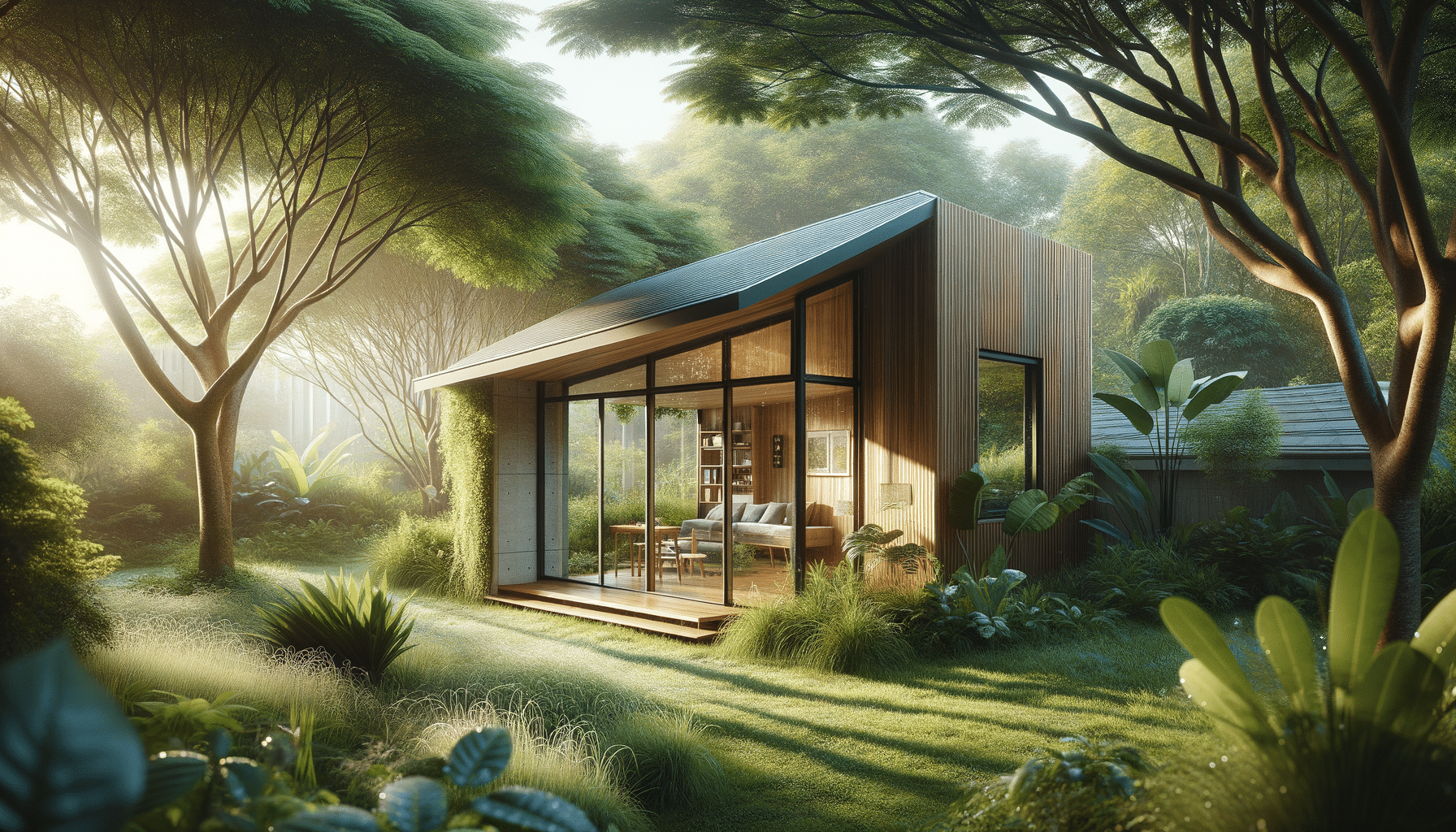
The Big Reasons Americans Are Moving to Smaller Homes
The Shift Towards Smaller Homes
In recent years, there has been a noticeable trend among Americans moving toward smaller homes. This shift is not merely a matter of preference but a reflection of changing lifestyles and priorities. With the rising cost of living and a growing awareness of environmental impact, many individuals and families are opting for homes that are not only smaller but also more efficient and sustainable.
The appeal of smaller homes lies in their affordability and manageability. As housing prices continue to soar, a smaller home often means a smaller mortgage or rent, which can significantly ease financial burdens. Moreover, these homes require less energy to heat and cool, leading to lower utility bills and a reduced carbon footprint. This aspect aligns with the increasing desire among people to live more sustainably.
Another factor driving this trend is the shift towards minimalism and a desire for a simpler lifestyle. Many Americans are finding value in owning less and experiencing more, leading them to downsize in their living arrangements. This movement is particularly popular among younger generations who prioritize experiences over material possessions.
Overall, the shift toward smaller homes is a multifaceted trend driven by economic, environmental, and lifestyle factors. It reflects a broader change in how people view their living spaces and the role these spaces play in their lives.
Economic Factors Influencing the Move
Economic considerations are a primary driver behind the move to smaller homes. The cost of housing has been steadily increasing, making it challenging for many to afford larger properties. This has led to a growing number of individuals and families seeking more budget-friendly options.
Smaller homes are often more affordable, not only in terms of purchase price but also in maintenance and upkeep. The financial relief that comes with reduced mortgage payments, lower property taxes, and decreased utility costs cannot be overstated. These savings allow homeowners to allocate funds to other important areas such as education, travel, or retirement savings.
Furthermore, the economic uncertainty brought on by factors such as job market fluctuations and inflation has prompted many to reconsider their housing choices. In an unpredictable economic climate, smaller homes offer a sense of financial security and flexibility. They provide a buffer against potential financial setbacks, ensuring that individuals and families can maintain a comfortable lifestyle without overextending their budgets.
In essence, the economic benefits of moving to smaller homes are compelling, providing both immediate and long-term financial advantages. This trend is a practical response to the economic challenges faced by many Americans today.
The Environmental Impact of Smaller Living Spaces
Environmental concerns are playing a significant role in the shift towards smaller homes. As awareness of climate change and environmental degradation grows, more people are seeking ways to reduce their ecological footprint, and housing is a critical area where this can be achieved.
Smaller homes typically require less energy to heat, cool, and maintain, which translates to lower greenhouse gas emissions. This reduction in energy consumption is not only beneficial for the environment but also aligns with the values of those who prioritize sustainable living. Additionally, smaller homes often encourage the use of environmentally friendly building materials and energy-efficient appliances, further enhancing their eco-friendly credentials.
Moreover, the trend towards smaller homes often involves a focus on sustainable design principles. This includes maximizing natural light, utilizing space-saving architectural features, and incorporating renewable energy sources such as solar panels. These elements contribute to a reduced environmental impact and a more sustainable lifestyle.
By choosing smaller homes, individuals are making a conscious decision to live in a way that is more harmonious with the planet. This movement towards environmentally responsible living is a testament to the growing importance of sustainability in housing choices.
Social and Lifestyle Changes Driving the Trend
The move to smaller homes is also influenced by changing social and lifestyle dynamics. Modern life is increasingly characterized by a desire for flexibility, mobility, and simplicity, all of which are facilitated by living in smaller spaces.
One of the key social changes driving this trend is the shift in family structures. With more single-person households and smaller family units, the need for large homes has diminished. Smaller homes are better suited to these living arrangements, offering just the right amount of space without unnecessary excess.
Furthermore, the rise of remote work has altered how people perceive and use their living spaces. With many individuals working from home, there is a greater emphasis on creating functional environments that support work-life balance. Smaller homes, with their efficient use of space, often provide the perfect backdrop for this new way of living.
The desire for a more intentional lifestyle is also a significant factor. Many people are embracing minimalism, focusing on quality over quantity, and seeking to declutter their lives. Smaller homes naturally complement this philosophy, promoting a lifestyle that values experiences and relationships over material possessions.
As society continues to evolve, the trend towards smaller homes is likely to persist, reflecting deeper shifts in how people live, work, and interact with their environments.
The Future of Housing: Smaller and Smarter
Looking ahead, the trend towards smaller homes is expected to continue, driven by both necessity and choice. As urban areas become more densely populated and land becomes scarcer, smaller homes offer a practical solution to housing shortages.
The future of housing will likely emphasize smart design and technology integration. Smaller homes are well-suited to these innovations, with many new builds incorporating smart home technology to enhance convenience, efficiency, and comfort. From automated lighting and temperature control to advanced security systems, these features are becoming increasingly accessible and desirable.
Additionally, the concept of co-living and shared spaces is gaining traction, particularly in urban environments. These arrangements offer the benefits of communal living while maintaining the privacy of individual spaces, making them an attractive option for those seeking a balance between community and independence.
As the housing landscape continues to evolve, smaller homes will play a crucial role in shaping the future. They represent not only a shift in size but also a transformation in how people think about and interact with their living spaces. This trend is a testament to the adaptability and resilience of individuals as they navigate the complexities of modern life.


